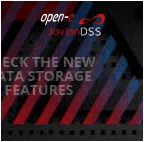Leatherman Tool Group Cuts ERP Wait Times
With PernixData FVP and Architect software
This is a Press Release edited by StorageNewsletter.com on February 16, 2016 at 3:00 pmPernixData, Inc. announced that Leatherman Tool Group, Inc., a manufacturer of high quality multi-tools and inventor of the multi-tool category, has deployed PernixData FVP and Architect software to optimize the performance of the company’s strategic ERP application.
With better storage analytics and performance, Leatherman improved its ability to collect key production data and maximized employee efficiency through lower application wait times.
Leatherman’s ERP system (built on Microsoft Dynamics AX) drives all of the transactions in the business, from procurement to raw material purchasing, manufacturing and material flow, order management, shipping and logistics, packaging and more. In Leatherman’s data intensive environment, it is key that its systems run at peak capacity so that its teams can adjust performance and adjust processes throughout the facility.
When the company embarked on a project to move from a 20-year old ERP system to Microsoft AX, it realized that the system was too slow for a virtual environment and the severe lag time in development process was proving to be a serious challenge. It was then that Travis Pierce, Leatherman’s IT director, came across PernixData while in search of a solution.
“PernixData helped us identify bottlenecks and quickly solved all of the performance problems we had with our ERP system,” said Pierce. “We were able to bring compile times from six hours down to 15 minutes, all while adding more efficient storage at a lower cost.“
In addition to FVP, Leatherman also deployed Architect to gain insight into its organization and get a clear view of how the data is being used.
Architect is a software platform for holistic data center design, deployment, operations and optimization. It combines an user experience with real-time analytics and design recommendations to deliver visibility and control of virtualized applications and the underlying storage infrastructure.
“A lot of the tools that we use today are very convoluted and hard to understand,” said Pierce. “PernixData Architect puts that all together in one easy to use interface. We can now see what’s happening as far as our read and write per VM, all the way down to the block size level.“
“We are very pleased with PernixData. We wouldn’t install a virtual system here without it,” concluded Pierce.















 Subscribe to our free daily newsletter
Subscribe to our free daily newsletter

